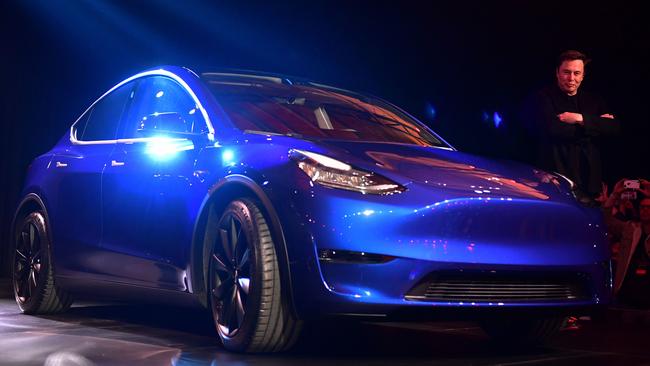Billions needed to charge electric engines, experts say
Experts have poured scorn on Labor’s electric vehicle target.

Experts poured scorn on Labor’s electric vehicle target yesterday, saying it was meaningless without a plan that would cost billions in buyer incentives, charging infrastructure and improvements to the existing energy network.
They said EV adoption in other countries relied heavily on subsidies, and the target — 50 per cent of new cars by 2030 — flew in the face of much lower estimates for Europe or the US. “I do not believe that could be done in Australia, full stop,” Adam Hammond, of finance company Bluetech, said.
“But if somebody wanted to have a crack, they’d need several billion dollars.”
He said installing infrastructure solved only part of the problem because super-fast charging would be too expensive under existing price regimes.
To achieve refills in 30 minutes or so, upcoming EVs from Porsche and other makers have high-voltage drivelines and power-dense batteries, but fast-chargers needed the energy companies to play ball.
“Under their current pricing model, it would cost you hundreds, if not thousands, to access that,” Mr Hammond said. “The utilities must support the infrastructure to allow access to that level of charging. The pipe has got to be really, really big, rather than just a big dam behind it. It’s got to be both.”
Europe was well advanced, with the German car industry and its energy companies co-operating to build the Ionity fast-charging network. But even Europe expects EV take-up far below Labor’s target, with the European Commission predicting 15-30 per cent of new sales by 2030.
In its latest Future Mobility Report, transport consultant Abmarc expects Australian new car sales will be 28 per cent battery-powered by 2038, with nine out of 10 vehicles still relying to some extent on internal combustion.
Abmarc’s Sarah Roberts said the 50 per cent goal would take “very significant incentives from this very low starting point” and the emissions picture was bleak without changes in the way we produce electricity.
“If it’s the same mix as today, emissions might actually be worse,” she said.
Many European countries already have a lot of hydro, wind and solar power, and improvements here would need to outpace efficiency gains in internal combustion engines.
Mr Hammond said countries with high EV take-up relied heavily on a carrot-and-stick approach and targeting private drivers was the hardest way forward.
“The low-hanging fruit in EVs is in the commercial space. For privately owned EVs, it’s going to take a lot of money. I don’t believe Bill and Co have really put some thought into this, other than latching on to a nice headline.’’



To join the conversation, please log in. Don't have an account? Register
Join the conversation, you are commenting as Logout